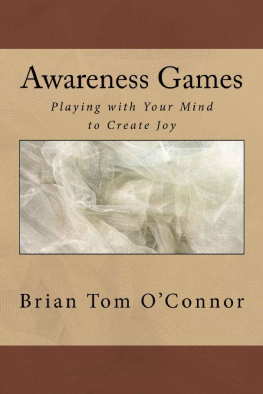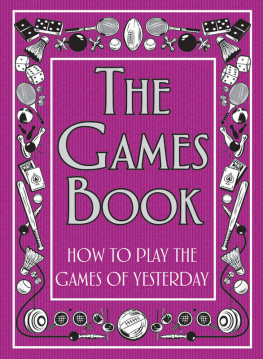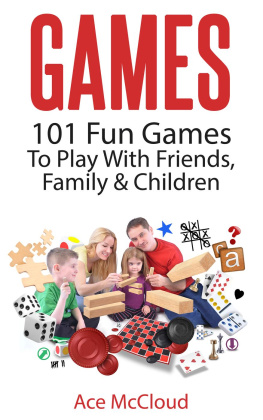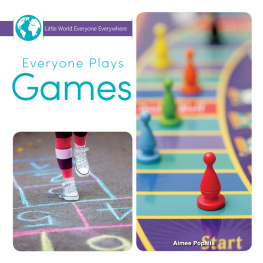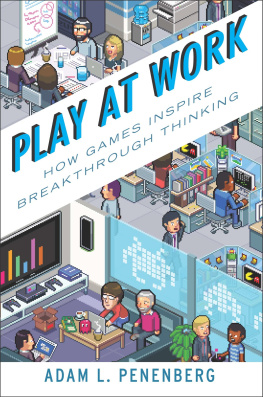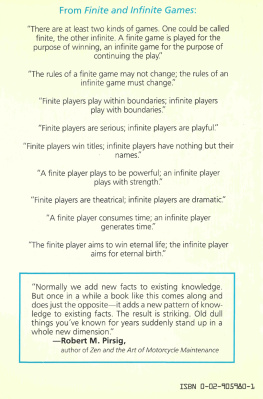AwarenessGames
An infinite well of happiness and joylies within each of us, and people from all cultures have been sending reports fromthere for thousands of years. I've stumbled upon it within me, so let's see ifyou can find it too. I bet we all can experience it if we know where to look.And where not to look.
It doesn't appear in the outsideworld. It doesn't appear in thoughts or concepts. It doesn't appear in anythingyou can give a name towhich makes it kind of tough to describe in words.
But anyone can experience it with alittle shift in the direction of attention. You can sense it by shifting yourpoint of view from the content of awareness to awareness itself. Of course,this is easier said than done, so we have to approach if from whatever angleworks for us. Sometimes we have to approach it sideways instead of directly.Sometimes the effort we exert to try to see it is the very thing that obscuresit.
Each of us needs to find what"clicks" for us, because this well of love and joy is a little bittricky to find. In fact, we have to stumble around until we accidentally fallinto it. There are no specific maps. That's where games come inbecause whenwe're playing a game we're letting go of the idea that only certain things workand certain other things don't work. We're experimentingwe're playingwe'restumblingwe're hoping to accidentally fall into this well because we'replaying around it.
And when we stumble into it we realizethat it's not something separate from usit is us. We can identify withthis pure ground of being, and when we do, we can discover that love and joypervade everythingeven pain. It's not that pain miraculously disappears, butthat we come to see pain as made of love, and this seeing transforms ourexperience of pain.
Another reason this limitless springof happiness and love is tricky to find is because it's invisible to the partof the mind that we use most of the time every day. It's invisible to the partof the mind that looks for differences between things, but it's visible to thepart of the mind that allows all opposites to existthe part of the mind thatdoesn't filter or categorize. It can be sensed by looking inside and becomingaware of awareness itselfbecoming aware of pure background, pure subjectivity.
The mind is the organ of separation.Its job is to scan the environment and distinguish between the good stuff andthe bad stuffthe stuff that will help us survive and the stuff that'sdangerous. But the mind is a toolit's not us. It's something we useit'ssomething we're aware ofit looks at objects. In fact, thought itself is anobject. What's aware of thought? What is thought appearing to? That's pure subjectivity.
This is nothing new. People have beenstumbling upon it for thousands of years and describing the experience inalmost as many ways as there are people describing it. But when people hearabout it, a funny thing happens. The mind takes it on as its joba problem tosolve or figure out. But the mind is a thirsty fish, forever looking for waterby analyzing its surroundings to figure out what's water and what's not water,not realizing it's all water. The mind can't see pure awareness becausethe mind is in pure awareness, like a fish is in water.
Nonetheless, pure awareness can beknown, but only when the mind takes a rest, or is distracted, or gives up.That's why we play games with it. We play with our mind by setting up variouslittle goals that short-circuit the usual mind business of figuring things out.
These are not Olympic Games or boardgames with winners and losers. These are not the games of game theorists (asfascinating as their theories are) or of competitive players (as enjoyable astheir games can be). They are fun ways to sidestep all the ways the mind sortsthe outside world, and instead, points it within to look for its own source.Playing these games is not like playing a video game with points to win andthings to destroy and goals to reach. It's more like playing with toys. Thetoys are your mind, your awareness, your innermost self. (I was tempted to callthis book Playing With Your Self, but I came tomy senses.)
All of these Awareness Games have onepurpose: to turn the mind around from outer focus to inner focus, and throughinner focus to find that obscure little secret passageway to expanded focus.The delightful surprise is that the obscure little secret passageway was hidingin plain sight all along.
Why Games?
Why games? Why not practices,techniques, meditations, questions, koans ,disciplines, instructions?
Because finding the well of joy withinis not something with correct answers, set rules, reproducible steps. Everyoneis different, so everyone must experiment (that is, play around) and stumbleupon what works for each person. The best way to do this is with an attitude oflightness, playfulness, ease, innocent curiosity.
Because you don't have to believeanything to play a game. If I try to teach you something, your mind runs itthrough the truth-checker. Is it true? Is it not true? Is it acrock? With a game, it doesn't matter. The only thing that matters iswhat you find out for yourself while you're playing around. You don't have tobelieve in any metaphysical, theological, philosophical, religious, spiritual,or even scientific concept. You just have to try it.
Because correctness and seriousnesshinder the search. In some senses, even searching hinders the search! Howcan you search for something that is already herethat you already have? And yet just sitting around watching TV may not do the trick either.
Also because I like to have fun.
So play with yourawareness like a toybounce it, squeeze it, smell it, shake it, become immersedin it. You may discover you are it. But don't take my word for itplaywith it yourself.
Why Me?
Who am I to be writing aboutawareness? I don't claim to be an enlightened person. I'm just a guy whohas experienced a lot of fear, anxiety, inhibition, and depression, and who wasdetermined to find an alternative to suffering.
I'd had enough glimpses of naturalhappiness to know what I was looking for. Even though they were fleeting and I couldn'tbring them about at will, I knew from remembering the taste what to be on thelookout for. Plus, I've gotten guidance along the way from some expertteachersboth in person and through writings and recordings.
Like most people, I tried a lot of things,some helpful, some not, and a pattern began to emerge among the teachers andwriters I kept coming back to. I waded through a lot of dead ends, falsestarts, and pure wishful thinking, but the material that rang true for me allhad certain elements in common: It's not out there, it's inside you. It'snot about controlling experience, it's about experience itself. It's about ashift in identity from the content of awareness to awareness itself. It's notabout what you're looking at, but about what's looking.
These themes kept cropping up over andover again in reports from all cultures and all agesthat is, if the reportshad a genuine flavor of the truth of first-hand experience.
But I also realized that I couldn'tsimply think my way there, or believe what others believe, or even follow thesteps that others prescribe. I could only experiment with myself and find myown way. I'm still in the process of doing that, and I invite you to join me.

